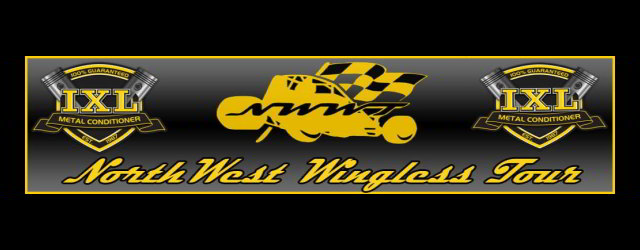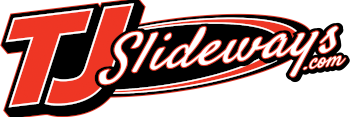
From Andrew Kunas
VANCOUVER, Wash. – The NorthWest Wingless Tour sprint car series has announced that it will go with a new race format for the 2011 season, one the series believes will be a big step forward for the Pacific Northwest’s premier non-wing sprint car tour as it enters its third season of competition.
Many people who have followed sprint car racing around the Pacific Northwest for years will probably recognize the format as very similar to the one used by the old Northern Sprint Tour, which ran winged 360 sprint cars, and later its short-live predecessor, the Northwest Sprint Challenge Series. That format, which was well known and popular with fans and drivers alike, is now being brought back in the non-wing world. Andrew Kunas, who served as publicist for the NWWT the past two years, has also agreed to become the new NWWT official charged with implementing the new format for the series.
The Northern Sprint Tour was started in 1996 and very successfully ran until 2006 when series founder Fred Brownfield was killed in an on-track accident at Grays Harbor Raceway. Former NST champion Shawna Wilskey and her father Dick Wilskey formed and ran the successful NSCS with the same qualifying-based program in 2007 before they sold the assets of the series, which was then turned into the Northwest Region of the American Sprint Car Series. That resulted in the long used qualifying format being scrapped in favor of the ASCS-standard pill draw and passing point format.
After having run two different formats in as many seasons and considering tweaking the one used in 2010, the NWWT felt a change was needed. Kunas stepped in and recommended the NWWT adopt practically the same format used by the NST and NSCS, and after investigating other options the NWWT management agreed to it.
Kunas attended, by his estimation, about 40 NST events between 2000 and 2006 and was the publicist for the NSCS during its lone year of existence and as a result was very familiar with the race night format used, the reason for which he agreed to become a new NWWT official to help with it.
“I really liked that format, the more I look back at it,” Kunas said. “It made sense, and it was generally easy for most people to understand. It just worked for years. We’re not trying to re-create the NST or anything like that. That’d be an insult to Fred and everyone who was involved in that series if we were. I want to see non-wing sprint car racing grow in this part of the country and I just believe that old format they used would be beneficial to the NWWT and that’s the reason I pushed for it.”
In addition to his duties as publicist, the 27-year-old Kunas will communicate on the NWWT’s behalf with local track officials regarding NWWT format, line-ups and procedures. He will figure out all line-ups, send them to the pit area to be posted and will also personally conduct the pill draw for the trophy dash.
“I’ve got the feeling I’m going to be a pretty busy guy when we open the season at Cottage Grove in a couple of weeks, getting new registrations, getting car and driver information for the P.R. stuff and later helping run the show,” Kunas said, “but I’m very excited. The NWWT has something really good going and is definitely the place to be for the non-wing guys.”
With the return of the trophy dash that will determine the first six starting positions of the feature race, the luck of the draw will come into play for the fastest six qualifiers who transfer out of their heat races. The NST was well known for conducting the pill draw, and interviews, on the front stretch in front of the fans while the NSCS even brought down kids from the grandstands to draw pills for the drivers. For this year, however, the NWWT will leave it to the tracks to decide either to bring the six dash drivers out to the front stretch for the pill draw or simply just have it done quietly in the pit area.
All heat races will be equally balanced based on qualifying and will have a minimum six cars in each with a six car invert, meaning the fast car in each heat will start 6th. If there are three heat races the top five finishers will transfer out of each heat while four will transfer if there are four heat races, and this will be used to determine the dash cars. If enough cars are entered on a given night, a B-Main event will be run and additional transfers will be taken to make a 20-car A-Main field. Behind the dash cars, the rest of the A-Main cars will generally line-up by qualifying time.
The only nights the NWWT currently does not expect to use its new format will be during the Northwest Non-Wing Nationals at Cottage Grove Speedway on September 23rd and 24th, when the track is expected to use its own special format for its big two-day event.
The NWWT is also using a new season point structure for 2011. The new point structure along with the new race night format can be seen online at http://www.nwwinglesstour.com. In order to receive points toward the NWWT championship drivers must register with the series and pay the membership fee. An 80% race attendance will be required to be eligible for any available point fund money and performance-based awards.
The NorthWest Wingless Tour sprint car series opens its 2011 campaign on Saturday, April 30th at Cottage Grove Speedway in Oregon. The series then runs back to back weekends in Washington, first at Grays Harbor Raceway on May 14th and then its inaugural event at Skagit Speedway on May 21st. The series currently has 17 events scheduled at six different tracks in Oregon and Washington.
More information on the NorthWest Wingless Tour sprint car series can be found online at http://www.nwwinglesstour.com.
